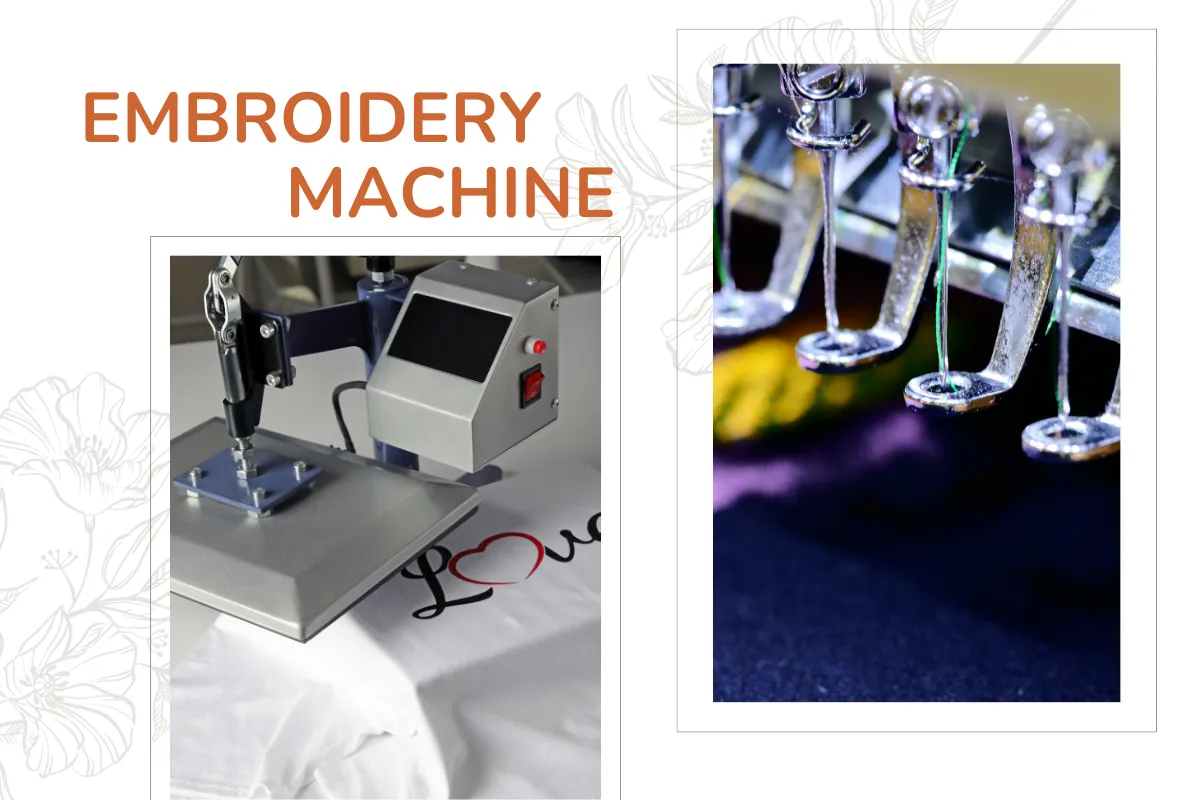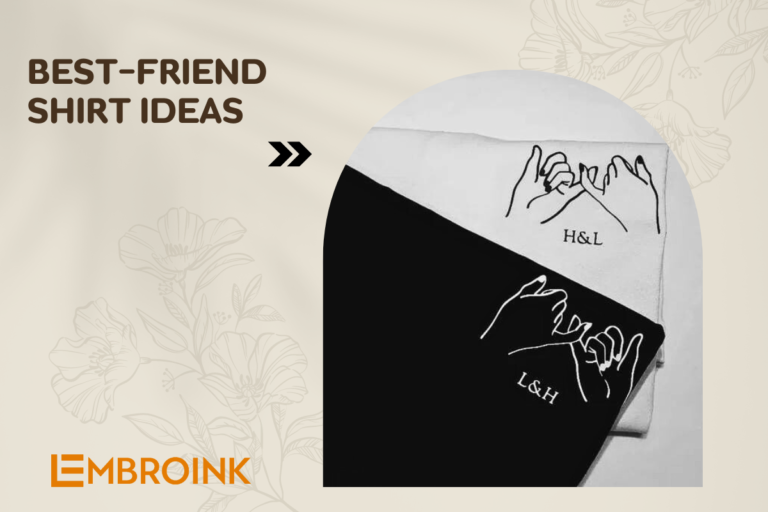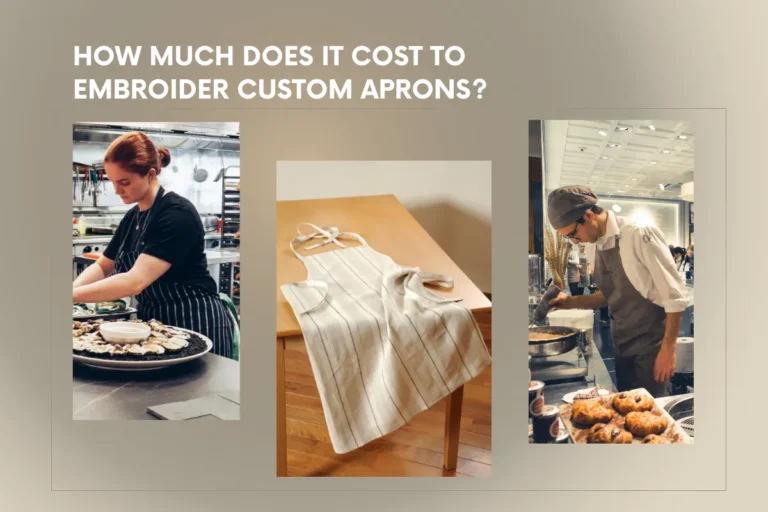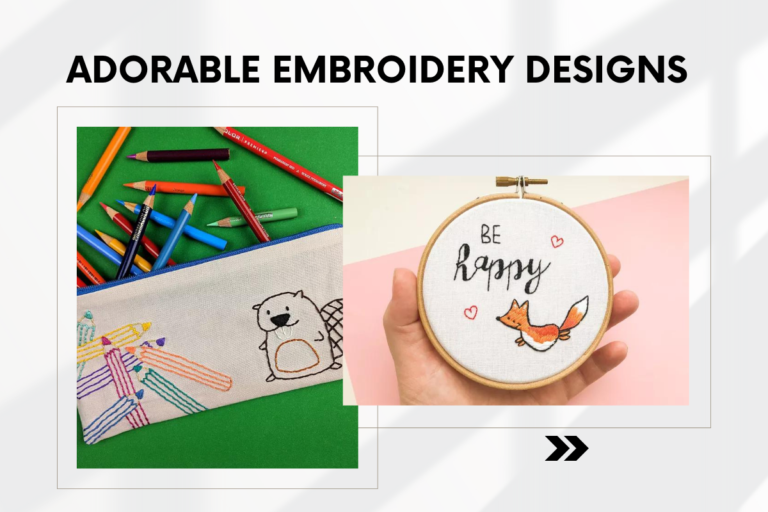Guide to safe and proper use of the embroidery machine
An embroidery machine is an automatic sewing device commonly used both in households and industrial sewing workshops. Due to the increasing demand, everyone wants to own an embroidery machine to fulfill their creative and practical needs. So, how should beginners learn to use an embroidery machine correctly? EmbronInk has shared detailed information on this topic in the following article. Let’s take a look.
What is a computerized embroidery machine?
A computerized embroidery machine is a specially designed device that performs automatic embroidery on fabric or other materials. Its operation is very straightforward, as the machine is equipped with automated functions and technology to enhance efficiency in the garment industry. The embroidery machine can handle images, letters, logo patterns, and more, which are pre-programmed onto various materials such as fabric, leather, and denim.
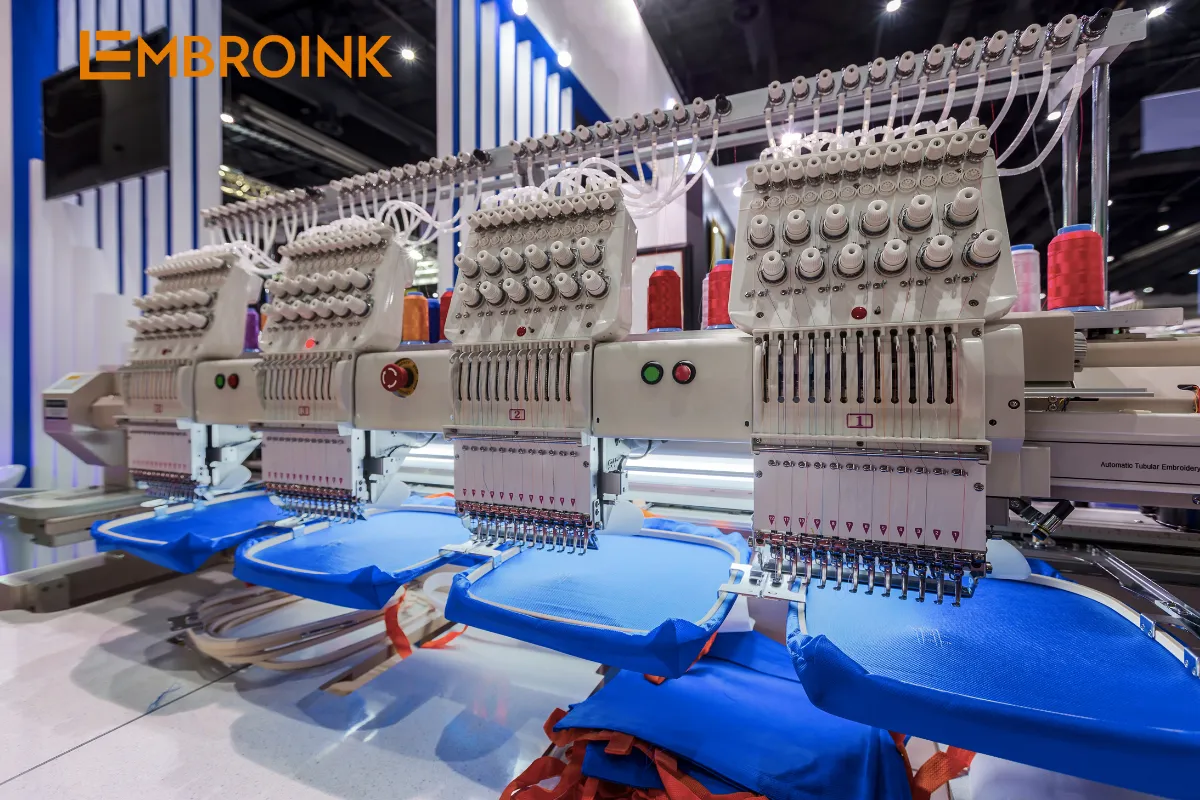
Nowadays, computerized embroidery machines have been increasingly improved, allowing users to easily create, control, and edit designs to produce beautiful embroidered patterns for products like clothing, hats, bags, and other apparel items.
The automation in the embroidery process boosts productivity and precision in the final product, while also reducing reliance on manual labor. This is why embroidery machines are widely used in industrial sewing workshops and businesses operating in the garment sector.
Popular types of computerized embroidery machines today
The precise use of an embroidery machine depends on its type, model, and brand. Therefore, let’s first explore the most popular types of embroidery machines on the market:
Home embroidery machines
Home embroidery machines are specifically tailored for domestic use, characterized by their compact size and intuitive interface, which collectively ensure ease of operation right from the outset. These machines are crafted to accommodate a wide range of embroidery tasks, offering capabilities such as straightforward lettering, logo embroidery, and elementary print designs. They are designed to be accessible to users of all skill levels, making it possible for novices to engage with embroidery effortlessly.
Typically more economical than their industrial counterparts, home embroidery machine models prioritize simplicity in functionality without compromising on quality. Many of these machines also integrate sewing functionalities, enhancing versatility and convenience for users who wish to combine sewing and embroidery tasks. This integration streamlines the creative process, allowing hobbyists and enthusiasts alike to explore their artistic inclinations through personalized embellishments on clothing, accessories, and home decor items. Thus, home embroidery machines not only democratize the art of embroidery but also empower individuals to express their creativity within the comforts of their own homes.
Industrial embroidery machines
Industrial embroidery machine models typically have higher capacity, larger sizes, more complex functions, and additional features to meet the large-scale production needs of factories. Consequently, the price of industrial machines is significantly higher compared to home models.
Industrial embroidery machines can be used to embroider on various types of fabric, including thick and tough materials. They can also handle larger and more detailed designs compared to home embroidery machines. Moreover, industrial embroidery machines are integrated with multiple functions to diversify the usage requirements of factories.
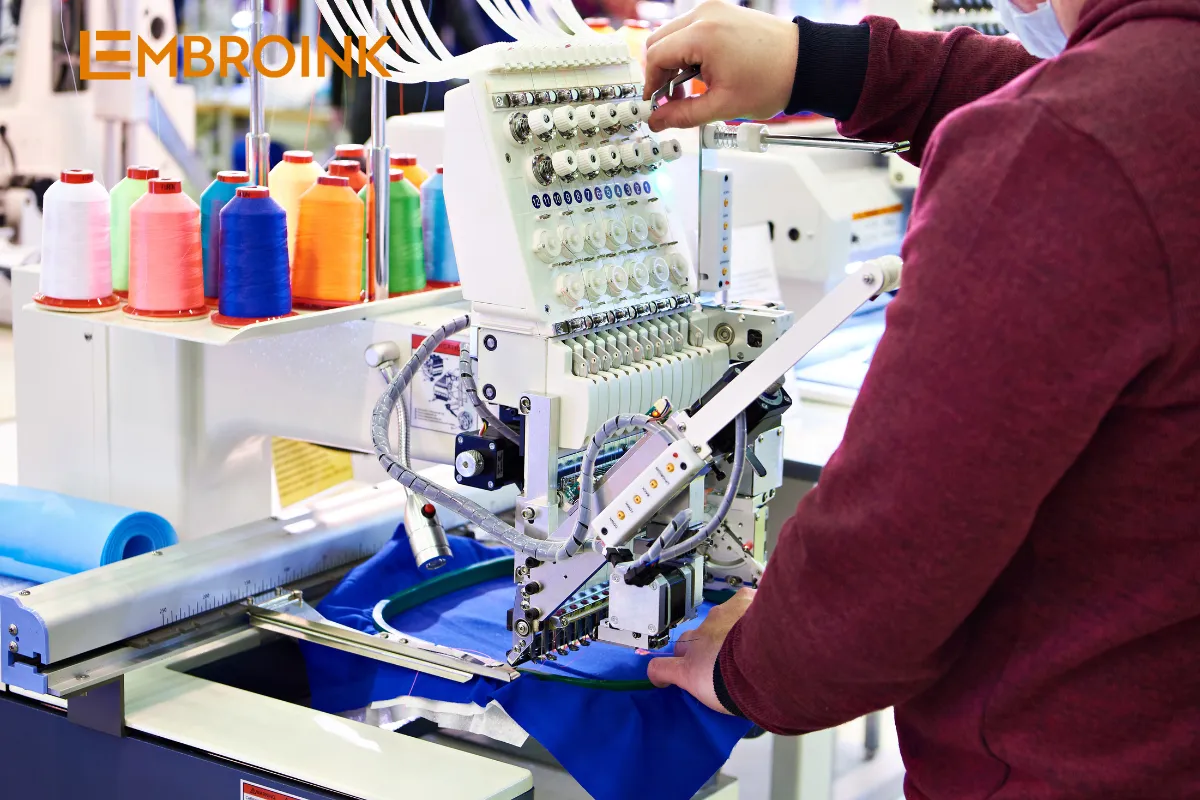
Guide to safe and proper use of the embroidery machine
To use an embroidery machine correctly, safely, and effectively, you need to follow the technical principles outlined below:
Step 1: Preparing the computerized embroidery machine
Before embarking on using the embroidery machine, it’s crucial to verify its correct installation. Ensure all components are securely assembled, and there are no foreign objects inside the machine that could potentially interfere with its operation.
Following this, confirm the embroidery needle is correctly installed. If you are a first-time user of the embroidery machine, consult the user manual for detailed instructions on how to properly insert and set up the needle. Proper needle installation is essential for achieving precise and consistent embroidery results, ensuring each stitch is executed accurately according to your designs. Taking these initial steps ensures a smooth and efficient embroidery process, minimizing the risk of errors and maximizing the quality of your finished embroideries.
Step 2: Selecting the embroidery pattern and thread
In the subsequent stage of utilizing the embroidery machine, you’ll select the specific embroidery pattern that you intend to stitch onto the fabric. These patterns can either be downloaded from the internet or created from scratch using the machine’s LCD screen.
Once you’ve chosen or designed your pattern, the next step involves selecting the suitable type of embroidery thread. This decision is crucial as it ensures that the thread complements both the pattern and the fabric, enhancing the overall quality and appearance of the final embroidered product. By meticulously choosing the right thread, you can achieve vibrant and durable embroidery that meets your creative vision and functional needs.
Step 3: Preparing the fabric and embroidery hoop
Before commencing the embroidery process, it’s essential to prepare both the fabric and the embroidery hoop diligently. Begin by ensuring that the fabric is securely and tautly stretched within the embroidery hoop. This step is crucial to prevent any wrinkles or looseness in the fabric during the embroidery process, which could adversely affect the quality of the stitching.
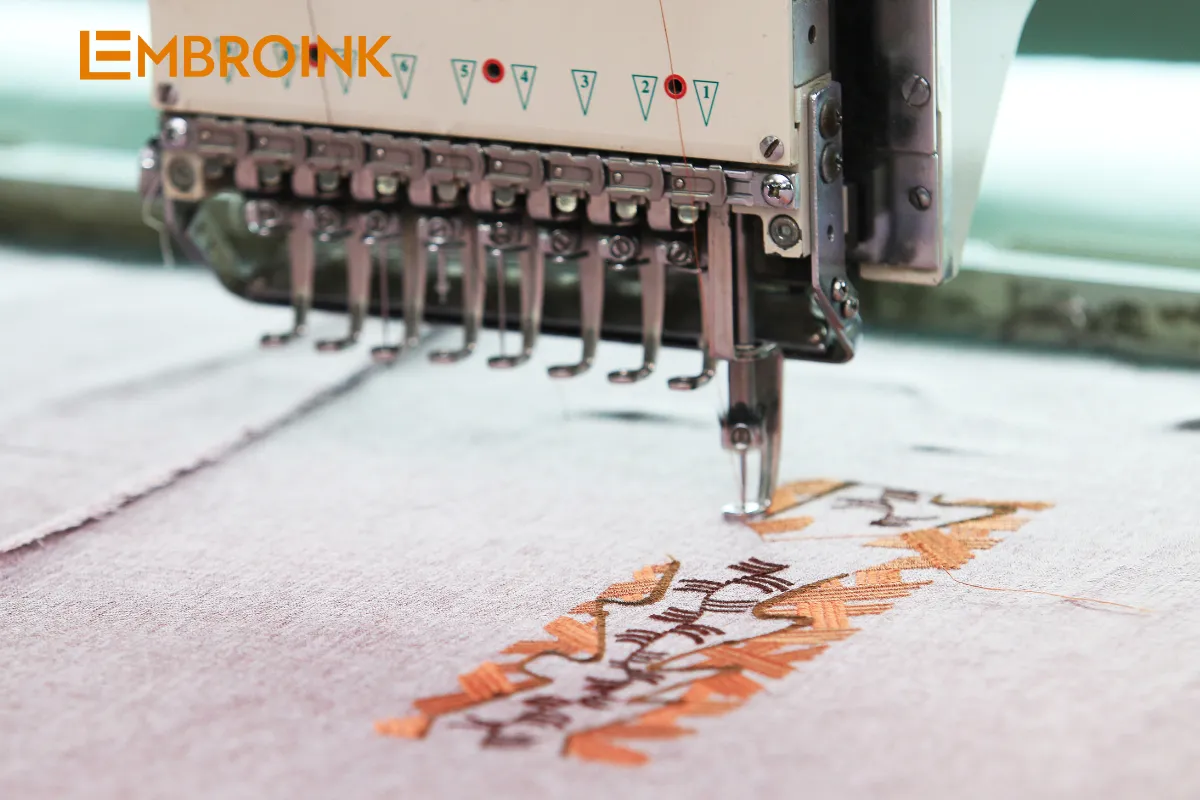
If you are utilizing a multifunctional embroidery hoop, take care to adjust its size according to the dimensions of the fabric. Proper adjustment ensures that the fabric fits snugly within the hoop, providing a stable and even surface for embroidery. This stability is essential for maintaining the accuracy and consistency of the stitches as the embroidery machine operates.
By meticulously preparing the fabric and hoop beforehand, you set a solid foundation for achieving high-quality embroidered results. This preparatory step not only enhances the aesthetic appeal of your embroidery but also contributes to the durability and professional finish of the final product.
Step 4: Embroidering the pattern on the fabric
Once everything is prepared, you can begin embroidering the pattern on the fabric. To use the embroidery machine correctly, ensure that the needle is properly installed and the thread is tightly secured on the needle. This will help make the embroidery process smoother and more accurate.
During the embroidery process, always check the position of the fabric and needle to ensure that the stitches are placed correctly. If necessary, you can stop the machine to adjust the position of the fabric and needle.
Step 5: Completing the embroidered product
Once you have completed embroidering the pattern on the fabric, the next step is to carefully remove the embroidery hoop from the fabric and take out the embroidered product. It’s essential to handle the fabric and embroidery carefully to avoid any damage to the stitches or fabric.
After removing the hoop, thoroughly inspect the embroidered product to ensure it meets your expectations. Check for any errors, such as missed stitches or thread breaks, and address them promptly if necessary. Small tools like embroidery scissors or tweezers can be used to trim any excess threads or make minor adjustments to perfect the final appearance of the embroidery.
Taking the time to inspect and refine the embroidered product ensures a polished and professional finish. This final step is crucial in delivering high-quality embroidery that showcases your craftsmanship and attention to detail. Once satisfied with the result, your embroidered fabric is ready to be used or displayed, showcasing your creativity and skill in embroidery.
By following these five steps, you can apply this process to using embroidery machines from various brands, such as mechanical machines, Juki embroidery machines, Tajima machines, and more.
Compilation of the best computerized embroidery techniques today
After mastering the proper technical use of the embroidery machine, you can apply the following techniques to ensure the appeal of your embroidered products:
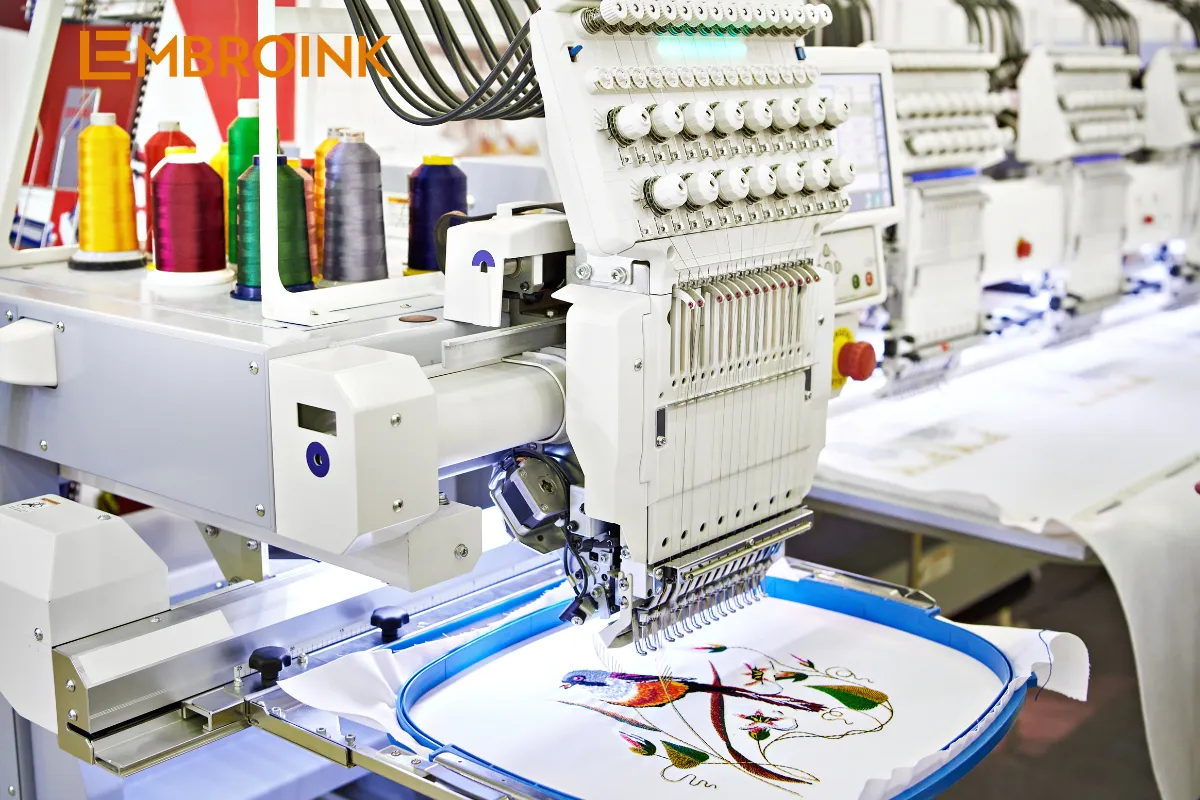
Multi-Color technique
This advanced technique equips the embroidery machine with the capability to adeptly manage intricate designs adorned with multiple colors. Multi-color embroidery not only facilitates the creation of stunning and diverse products but also enhances their vibrancy and visual appeal.
By harnessing this method, artisans can intricately embroider a wide array of motifs, ranging from detailed images capturing life-like portraits to expansive landscapes that evoke a sense of natural beauty and wonder. This versatility makes multi-color embroidery a preferred choice in creating bespoke textile artworks that resonate with richness and depth, elevating the aesthetic value of garments, home decor, and personalized gifts alike.
Uniform technique
With uniform embroidery, the machine embroiders using a single color to create simple, consistent patterns. In this method, you just need to choose one thread color and adjust the machine to run along the outline of the image. The machine will then automatically embroider according to the specified outline. This technique is commonly used for embroidering letters, logos, and simple patterns.
Important considerations when using an embroidery machine
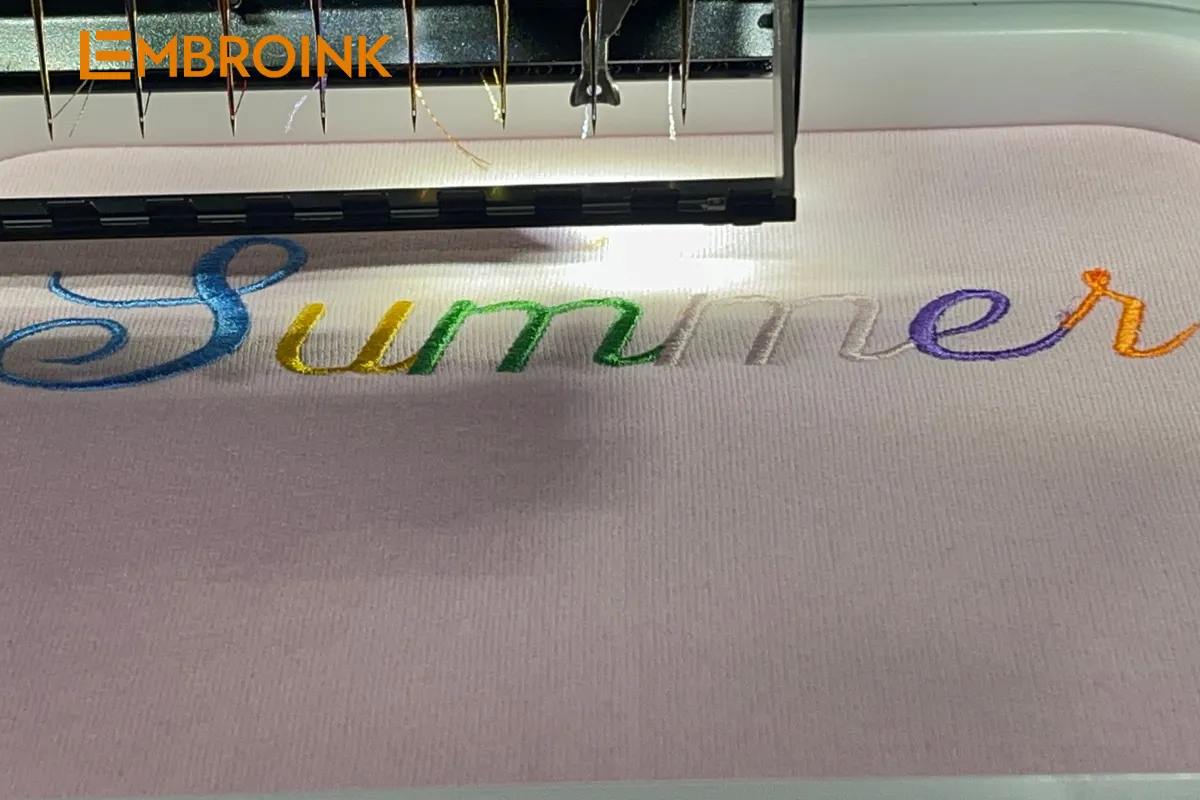
In addition to mastering the proper technical use of an embroidery machine, users should also keep the following points in mind to ensure safety and efficiency:
- Follow manufacturer’s instructions: Always adhere to the manufacturer’s guidelines to ensure safety and effectiveness while operating the embroidery machine.
- Regular cleaning and maintenance: Ensure the embroidery machine is cleaned and maintained regularly to keep it functioning properly.
- Use High-Quality embroidery thread: Use high-quality thread to ensure the durability and beauty of the embroidered products.
- Frequently change embroidery needles: Regularly replace the embroidery needles to ensure that the stitches are even and precise.
- Supervision: Do not leave children or inexperienced individuals alone with the embroidery machine.
- Turn off the machine when not in use: Always turn off the embroidery machine when not in use and make sure its parts are neatly stored.
So, we have learned about how to use an embroidery machine and the important considerations when using this device. Using an embroidery machine requires carefulness and skills, but by following the basic steps and adhering to the safety rules as outlined by EmbronInk above, you can create beautiful and unique embroidered products. Wishing you success in applying this formula!

